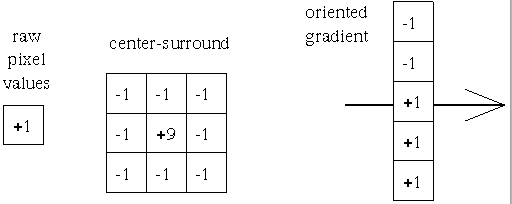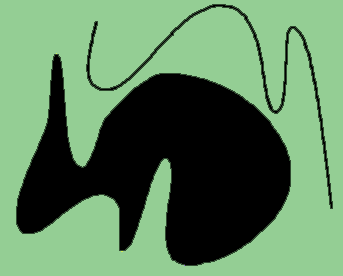
The three input representations consisted of the raw pixel values and two neurologically inspired models, illustrated here in Figure 6.

The center-surround filter is based on early retinal processing, while the oriented gradient represents an oriented filter, such as those in the complex cells. These three filters evaluate to +1 when over a constant area.
The two output spaces were those discussed above: the SEV (smooth-evaluation-function), and the FD (feature-detector).
The two tasks were 1) edge following and 2) line following. A basic
graphic was generated to minimize confounding influences of noise and texture
in real images, shown here in Figure 7.

The neural network topology consisted of one input layer with five inputs,
preprocessed as discussed above; there were 10 hidden units and one output
unit (either SEV or FD). Other parameters held constant across the runs
were: the initial training segment used; the pseudo-random network initialization;
and the learning and momentum rates.